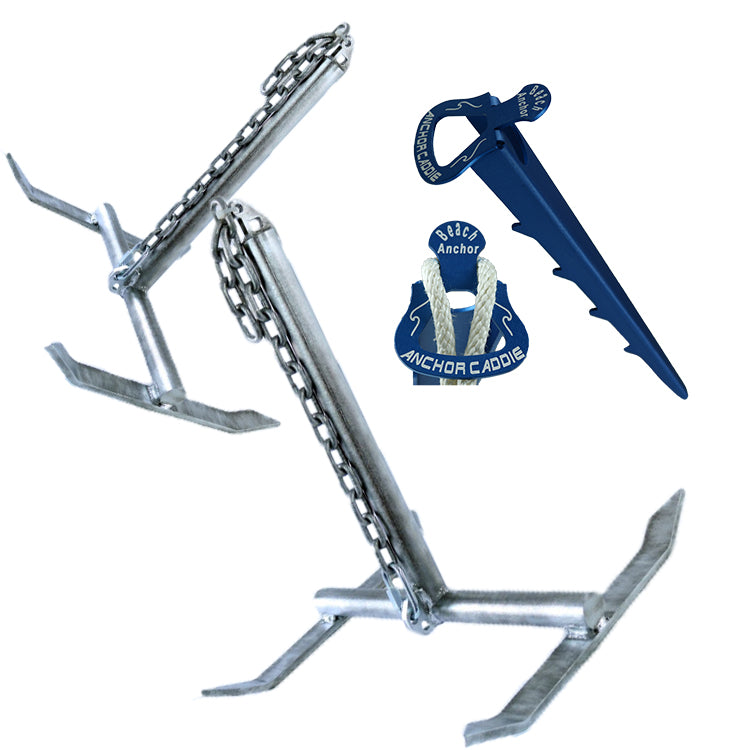What Type of Anchor for My Boat?
Posted by ANCHOR-CADDIE.COM STAFF

Choosing the Right Anchor for Your Boat
When it comes to boating, one of the most important pieces of equipment you need is an anchor. An anchor ensures that your boat stays in place, whether you're fishing, enjoying a swim, or taking a break from cruising. But with so many different types of anchors available, how do you know which one is right for your boat? In this article, we'll explore the different types of anchors and help you make an informed decision.
1. Rocker River Anchors
Rocker River anchors, also known as Rocking Chair anchors or Breakaway anchors are one of the most popular choices for small to medium-sized boats. They have two tines that dig into the seabed and provide excellent holding power. They work well in mixed rock or harder bottoms. They are a good all round river anchor. They also offer a breakaway feature that can help release the anchor if it gets stuck under a hard structure.
2. Fluke Anchors
Fluke anchors, also known as Danforth anchors, are one of the most popular choices for small to medium-sized boats. They have two flat triangular blades, or flukes, that dig into the seabed and provide excellent holding power. Fluke anchors are lightweight, easy to handle, and work well in sandy or muddy bottoms.
3. Plow Anchors
Plow anchors, also called CQR anchors, are known for their strength and reliability. They have a plow-like design that allows them to penetrate various types of bottoms, including sand, mud, and grass. Plow anchors are ideal for larger boats and are commonly used for overnight stays or in areas with strong currents or high winds.
4. Claw Anchors
Claw anchors, also known as Bruce anchors, are designed for rocky or weedy bottoms. They have a claw-like shape that provides a strong grip in challenging conditions. Claw anchors are versatile and can be used for both small and large boats.
5. Mushroom Anchors
Mushroom anchors are mostly used for small boats, such as canoes or dinghies. They have a round, mushroom-shaped head that prevents them from getting stuck in rocks or coral reefs. Mushroom anchors are lightweight and easy to store, making them a popular choice for boaters looking for convenience.
6. Grapnel Anchors
Grapnel anchors are commonly used for small boats or as a secondary anchor. They have multiple hooks, or flukes, that can catch on rocks, debris, or vegetation. Grapnel anchors are lightweight and easy to handle, but they may not provide the same level of holding power as other anchor types.
Factors to Consider
When choosing an anchor for your boat, there are a few factors to consider:
- The size and weight of your boat
- The type of boating you'll be doing (e.g., fishing, cruising, overnight stays)
- The type of bottom in your boating area (e.g., sand, mud, rocks)
- The weather conditions you're likely to encounter
- Your budget
It's important to choose an anchor that matches your boat's size and weight to ensure it provides adequate holding power. Consider the type of boating you'll be doing and the bottom conditions in your area to select an anchor that suits your needs.
Remember, safety should always be a priority when boating. Investing in a good-quality anchor and knowing how to use it properly will give you peace of mind and help keep your boat secure.
Now that you have a better understanding of the different types of anchors available, you can make an informed decision and choose the right anchor for your boat.
Happy boating!


